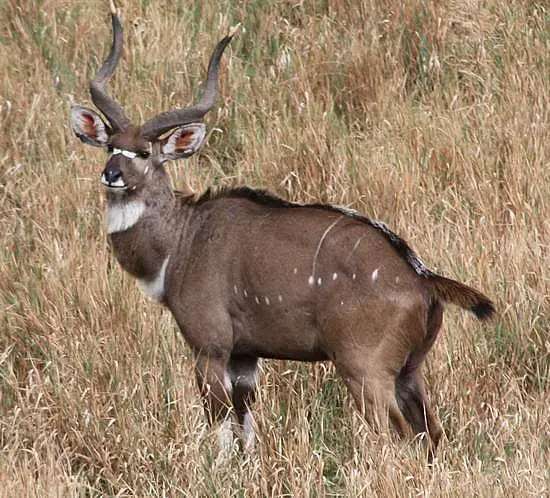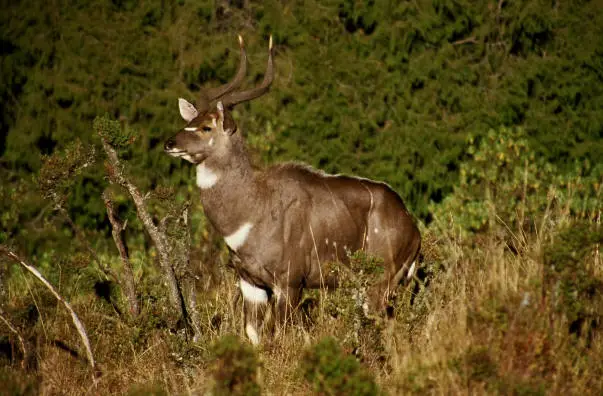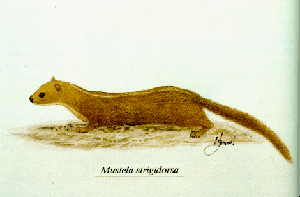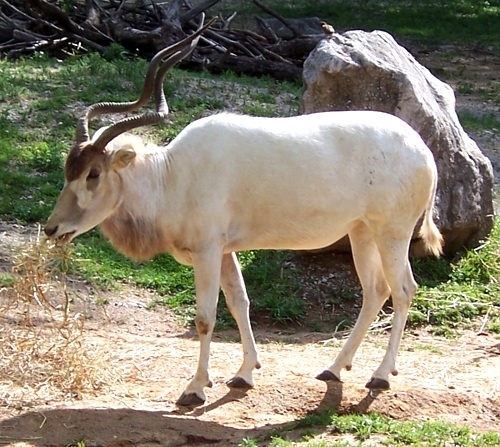Mountain Nyala
Mountain Nyala’s homeland is the cold mountain pastures in Ethiopia that are so wide and isolated that this species was discovered only in 1908. In appearance, these animals are very similar to the Greater Kudu, and were therefore sometimes called the “Medium Kudu”. Just like Kudus, Mountain Nyala males have prominent horns, and a rather structured build, giving for an impressive appearance. Their colouration varies from brownish gray to dark brown, with small, white spots all over the body.
Mountain Nyalas’s natural habitat is the mountain areas 3000-4200 metres above sea level. The total area of distribution reaches only 150 square kilometres, and the population is made of no more than 4000 individuals. They live in the mountain forests and their surrounding pastures. In the rain period, Mountan Nyalas move to live in very dense forests, around 3000 metres above sea level.
Females and their calves live in small groups, most usually reaching the size of 4-6 specimen, up to a maximum of 16 animals per group. Young males also live in small groups, while the mature ones prefer leading solitary lives. Mountain Nyalas are easily scared and they rarely wander in open territories. They are usually active during the night, and they can most often be seen in the evenings, when the group moves to a feeding area.
These mammals feed on leaves, sprouts and fallen fruits. They also dig up tree sprouts and roots from the ground with their nails. Mountain Nyalas also like grass, but in the high areas they inhabit, grass is a rarity. When the rain period comes, Nyalas move to lower areas, where they graze in fresh grass, usually in abandoned livestock pastures. They can also encounter rivalry for food from the massive Impala herds.
During the mating period, which usually lasts October through December, the solitary males find a group of females. Each of these groups invite a single male that for the time being becomes the leader. Gestation period lasts for seven to nine months and a single calf is born, who is then nursed for six months. Young Mountain Nyalas can become prey for predators, especially leopards, which is why the male also guards the offspring, repelling enemies with its sharp horns.
Mountain Nyalas have an incredibly good sense of smell and hearing. Being of a rather skittish nature, these animals will try to flee to the nearest forest or bushes upon spotting the smallest danger. Still, Mountain Nyalas don’t have many natural predators. Probably the largest natural threat to these animals are leopards, but even they hunt only on calves or old and weakened animals – a grown male can easily repel the wild cat with its massive horns. They do not, however, help against human actions, which slowly but inevitably destroy the natural habitat of these spectacular animals, as more and more forests are logged and fields converted into farmland areas.




